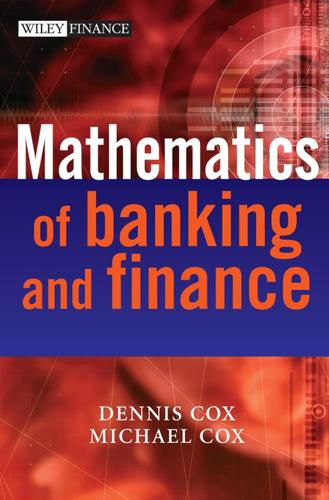
The Mathematics of Banking and Finance
by
Dennis W. Cox
and
Michael A. A. Cox
Published 30 Apr 2006
However, if B or C is chosen, then Monty, respectively, must reveal C or B. These options are set out in Table 22.8. Simulation: Monte Carlo Methods 213 Table 22.7 Cumulative initial probabilities for the Monty Hall problem Choice Cumulative probability Probability A B C 0.3333 0.3333 0.3333 0 0.3333 0.6666 1 Table 22.8 Second event probabilities for the Monty Hall problem Initial choice Shown Probability Stick Switch B C C B 0.5 0.5 1 ! A A A A C B B C A A B C Table 22.9 Simulation of the Monty Hall problem Random variable 0.8444 0.1011 0.5444 0.9736 0.4440 0.2745 0.9083 0.6326 0.5568 0.6940 Initial choice Random variable Shown C A B C B A C B B C 0.8691 0.0009 0.4648 0.2184 0.7167 0.8878 0.4055 0.0617 0.9972 0.9833 B B C B C C B C C B Switch A C A A A B A A A A win lose win win win lose win win win win Stick C A B C B A C B B C lose win lose lose lose win lose lose lose lose Table 22.10 Summary of a Monte Carlo simulation of the Monty Hall problem Switch Stick Win Lose 1,320 680 680 1,320 Ratio 0.66 0.34 The player may either stick with the original choice or switch.
…
Initial choice Shown New choice 0.5 A 0.5 B 0.0833 No change & Win 0.0833 Change & Lose 0.0833 No change & Win 0.0833 Change & Lose 0.1667 Change & Win 0.1667 No change & Lose 0.1667 Change & Win 0.1667 No change & Lose 0.5 C 0.3333 A 0.5 A 0.5 C 0.5 B 0.5 A 0.3333 B 1.0 C 0.5 B 0.5 A 0.3333 C 1.0 C 0.5 C Figure 4.9 Tree diagram for the Monty Hall problem. Probability Theory 35 Table 4.2 Summary probabilities for Monty Hall problem Change No change Win Lose 0.3333 0.1667 0.1667 0.3333 Therefore in order to maximise the chance of winning, the optimal strategy is for the contestant to change his choice, since he is twice as likely to win than if he fails to switch. Monty has shown the contestant additional information by opening one of the doors, which has provided the contestant with a better chance of winning.
…
. ; options design/approach to analysis, data 129–47 dice-rolling examples, probability theory 21–3, 53–5 differentiation 251 discount factors adjusted discount rates 228–9 net present value (NPV) 220–1, 228–9, 231–2 discrete data bar charts 7–12, 13 concepts 7–12, 13, 44–5, 53–5, 72 discrete uniform distribution, concepts 53–5 displays see also presentational approaches data 1–5 Disraeli, Benjamin 1 division notation 280, 282 dynamic programming complex examples 184–7 concepts 179–87 costs 180–82 examples 180–87 principle of optimality 179–87 returns 179–80 schematic 179–80 ‘travelling salesman’ problem 185–7 e-mail surveys 50–1 economic order quantity see also stock control concepts 195–201 examples 196–9 empowerment, staff 189–90 error sum of the squares (SSE), concepts 122–5, 133–47 errors, data analysis 129–47 estimates mean 76–81 probability theory 22, 25–6, 31–5, 75–81 Euler, L. 131 288 Index events independent events 22–4, 35, 58, 60, 92–5 mutually exclusive events 22–4, 58 probability theory 21–35, 58–66, 92–5 scenario analysis 40, 193–4, 271–4 tree diagrams 30–5 Excel 68, 206–7 exclusive events see mutually exclusive events expected errors, sensitivity analysis 268–9 expected value, net present value (NPV) 231–2 expert systems 275 exponent notation 282–4 exponential distribution, concepts 65–6, 209–10, 252–5 external fraud 272–4 extrapolation 119 extreme value distributions, VaR 262–4 F distribution ANOVA (analysis of variance) 110–20, 127, 134–7 concepts 85–9, 110–20, 127, 134–7 examples 85–9, 110–20, 127, 137 tables 85–8 f notation 8–9, 13–20, 26, 38–9, 44–5, 65–6, 85 factorial notation 53–5, 283–4 failure probabilities see also reliability replacement of assets 215–18, 249–60 feasibility polygons 152–7, 163–4 finance selection, linear programming 164–6 fire extinguishers, ANOVA (analysis of variance) 123–7 focus groups 51 forward recursion 179–87 four by four tables 94–5 fraud 272–4, 276 Fréchet distribution 262 frequency concepts 8–9, 13–20, 37–45 cumulative frequency polygons 13–20, 39–40, 203 graphical presentational approaches 8–9, 13–20 frequentist approach, probability theory 22, 25–6 future cash flows 219–25, 227–34, 240–1 fuzzy logic 276 Garbage In, Garbage Out (GIGO) 261–2 general rules, linear programming 167–70 genetic algorithms 276 ghost costs, transport problems 172–7 goodness of fit test, chi-squared test 91–5 gradient (a notation), linear regression 103–4, 107–20 graphical method, linear programming 149–57, 163–4 graphical presentational approaches concepts 1–20, 149–57, 235–47 rules 8–9 greater-than notation 280–4 Greek alphabet 283 guesswork, modelling 191 histograms 2, 7, 13–20, 41, 73 class intervals 13–20, 44–5 comparative histograms 14–19 concepts 7, 13–20, 41, 73 continuous data 7, 13–14 examples 13–20, 73 skewness 41 uses 7, 13–20 holding costs 182–5, 197–201, 204–8 home insurance 10–12 Hopfield 275 horizontal axis bar charts 8–9 histograms 14–20 linear regression 103–4, 107–20 scatter plots 2–5, 103 hypothesis testing concepts 77–81, 85–95, 110–27 examples 78–80, 85 type I and type II errors 80–1 i notation 8–9, 13–20, 28–30, 37–8, 103–20 identification data 2–5, 261–5 trends 241–7 identity rule 282 impact assessments 21, 271–4 independent events, probability theory 22–4, 35, 58, 60, 92–5 independent variables, concepts 2–5, 70, 103–20, 235 infinity, normal distribution 67–72 information, quality needs 190–4 initial solution, linear programming 167–70 insurance industry 10–12, 29–30 integers 280–4 integration 65–6, 251 intercept (b notation), linear regression 103–4, 107–20 interest rates base rates 240 daily movements 40, 261 project evaluation 219–25, 228–9 internal rate of return (IRR) concepts 220–2, 223–5 examples 220–2 interpolation, IRR 221–2 interviews, uses 48, 51–2 inventory control see stock control Index investment strategies 149–57, 164–6, 262–5 IRR see internal rate of return iterative processes, linear programming 170 j notation 28–30, 37, 104–20, 121–2 JP Morgan 263 k notation 20, 121–7 ‘know your customer’ 272 Kohonen self-organising maps 275 Latin squares concepts 131–2, 143–7 examples 143–7 lead times, stock control 195–201 learning strategies, neural networks 275–6 less-than notation 281–4 lethargy pitfalls, decisions 189 likelihood considerations, scenario analysis 272–3 linear programming additional variables 167–70 concepts 149–70 concerns 170 constraining equations 159–70 costs 167–70, 171–7 critique 170 examples 149–57, 159–70 finance selection 164–6 general rules 167–70 graphical method 149–57, 163–4 initial solution 167–70 iterative processes 170 manual preparation 170 most profitable loans 159–66 optimal advertising allocation 154–7 optimal investment strategies 149–57, 164–6 returns 149–57, 164–6 simplex method 159–70, 171–2 standardisation 167–70 time constraints 167–70 transport problems 171–7 linear regression analysis 110–20 ANOVA (analysis of variance) 110–20 concepts 3, 103–20 equation 103–4 examples 107–20 gradient (a notation) 103–4, 107–20 intercept (b notation) 103–4, 107–20 interpretation 110–20 notation 103–4 residual sum of the squares 109–20 slope significance test 112–20 uncertainties 108–20 literature searches, surveys 48 289 loans finance selection 164–6 linear programming 159–66 risk assessments 159–60 log-normal distribution, concepts 257–8 logarithms (logs), types 20, 61 losses, banks 267–9, 271–4 lotteries 22 lower/upper quartiles, concepts 39–41 m notation 55–8 mail surveys 48, 50–1 management information, graphical presentational approaches 1–20 Mann–Whitney test see U test manual preparation, linear programming 170 margin of error, project evaluation 229–30 market prices, VaR 264–5 marketing brochures 184–7 mathematics 1, 7–8, 196–9, 219–20, 222–5, 234, 240–1, 251, 279–84 matrix plots, concepts 2, 4–5 matrix-based approach, transport problems 171–7 maximum and minimum, concepts 37–9, 40, 254–5 mean comparison of two sample means 79–81 comparisons 75–81 concepts 37–45, 59–60, 65–6, 67–74, 75–81, 97–8, 100–2, 104–27, 134–5 confidence intervals 71, 75–81, 105, 109, 116–20, 190, 262–5 continuous data 44–5, 65–6 estimates 76–81 hypothesis testing 77–81 linear regression 104–20 normal distribution 67–74, 75–81, 97–8 sampling 75–81 mean square causes (MSC), concepts 122–7, 134–47 mean square errors (MSE), ANOVA (analysis of variance) 110–20, 121–7, 134–7 median, concepts 37, 38–42, 83, 98–9 mid-points class intervals 44–5, 241–7 moving averages 241–7 minimax regret rule, concepts 192–4 minimum and maximum, concepts 37–9, 40 mode, concepts 37, 39, 41 modelling banks 75–81, 85, 97, 267–9, 271–4 concepts 75–81, 83, 91–2, 189–90, 195–201, 215–18, 261–5 decision-making pitfalls 189–91 economic order quantity 195–201 290 Index modelling (cont.) guesswork 191 neural networks 275–7 operational risk 75, 262–5, 267–9, 271–4 output reviews 191–2 replacement of assets 215–18, 249–60 VaR 261–5 moments, density functions 65–6, 83–4 money laundering 272–4 Monte Carlo simulation bank cashier problem 209–12 concepts 203–14, 234 examples 203–8 Monty Hall problem 212–13 queuing problems 208–10 random numbers 207–8 stock control 203–8 uses 203, 234 Monty Hall problem 34–5, 212–13 moving averages concepts 241–7 even numbers/observations 244–5 moving totals 245–7 MQMQM plot, concepts 40 MSC see mean square causes MSE see mean square errors multi-way tables, concepts 94–5 multiplication notation 279–80, 282 multiplication rule, probability theory 26–7 multistage sampling 50 mutually exclusive events, probability theory 22–4, 58 n notation 7, 20, 28–30, 37–45, 54–8, 103–20, 121–7, 132–47, 232–4 n!

Radical Uncertainty: Decision-Making for an Unknowable Future
by
Mervyn King
and
John Kay
Published 5 Mar 2020
The dial’s first move records the probability that A will win the match given that he has won the first game , and then subsequently adjusts to the probability that he will win overall conditional on A having won the first game, but B having won the second , and so on as the evening progresses. Hall The Monty Hall problem 15 is a famous illustration of the power of Bayes’ theorem, loosely based on the 1960s American quiz show Let’s Make a Deal , in which contestants would bid for prizes hidden behind curtains, and named after its host. The puzzle was originally posed by the American statistician Steven Selvin – and has been subsequently the subject of extensive correspondence and literature.
…
The Indifference Principle The solutions to the problem of points and the Monty Hall game rely on what has become known as the Indifference Principle – that if we have no reason to think one thing more likely than another, we can attach equal probabilities to each. We assumed that the Duke and Marquis were equally likely to win each of the remaining games, and perhaps there was a frequency distribution of past results of similar games to guide our conjecture. In the Monty Hall problem, we judged that if there were three identical boxes the probability that the keys were in any one of them was one third. 17 John Maynard Keynes is known to everyone for his many contributions to public policy in Britain and internationally during the inter-war period and the Second World War.
…
(In Let’s Make a Deal , raucous audience participation was an essential part of the show’s now difficult to understand appeal to its viewers.) But once everyone understands the problem, then how can the show sustain its interest? Can the viewers be confident that the original rules are still being applied? Real worlds are always complex. Many commentators and teachers use the Monty Hall problem to emphasise that a puzzle, or model, can only be ‘solved’ if the assumptions made are completely specified. And this observation is correct. But in a world of radical uncertainty, problems are rarely completely specified. The mathematics of probability requires that the sum of the probabilities of all possible events adds up to 1.

The Drunkard's Walk: How Randomness Rules Our Lives
by
Leonard Mlodinow
Published 12 May 2008
14 No, it is not: If the students were lying, the correct probability of their choosing the same answer is 1 in 4 (if you need help to see why, you can look at the notes at the back of this book).15 And now that we’re accustomed to decomposing a problem into lists of possibilities, we are ready to employ the law of the sample space to tackle the Monty Hall problem. AS I SAID EARLIER, understanding the Monty Hall problem requires no mathematical training. But it does require some careful logical thought, so if you are reading this while watching Simpsons reruns, you might want to postpone one activity or the other. The good news is it goes on for only a few pages. In the Monty Hall problem you are facing three doors: behind one door is something valuable, say a shiny red Maserati; behind the other two, an item of far less interest, say the complete works of Shakespeare in Serbian.
…
In the words of a Harvard professor who specializes in probability and statistics, “Our brains are just not wired to do probability problems very well.”7 The great American physicist Richard Feynman once told me never to think I understood a work in physics if all I had done was read someone else’s derivation. The only way to really understand a theory, he said, is to derive it yourself (or perhaps end up disproving it!). For those of us who aren’t Feynman, re-proving other people’s work is a good way to end up untenured and plying our math skills as a checker at Home Depot. But the Monty Hall problem is one of those that can be solved without any specialized mathematical knowledge. You don’t need calculus, geometry, algebra, or even amphetamines, which Erdös was reportedly fond of taking.8 (As legend has it, once after quitting for a month, he remarked, “Before, when I looked at a piece of blank paper my mind was filled with ideas.
…
But unless you can bend silver spoons into pretzels with your brain waves, the odds are 2 to 1 that you are in the Wrong Guess scenario, and so it is better to switch. Statistics from the television program bear this out: those who found themselves in the situation described in the problem and switched their choice won about twice as often as those who did not. The Monty Hall problem is hard to grasp because unless you think about it carefully, the role of the host, like that of your mother, goes unappreciated. But the host is fixing the game. The host’s role can be made obvious if we suppose that instead of 3 doors, there were 100. You still choose door 1, but now you have a probability of 1 in 100 of being right.
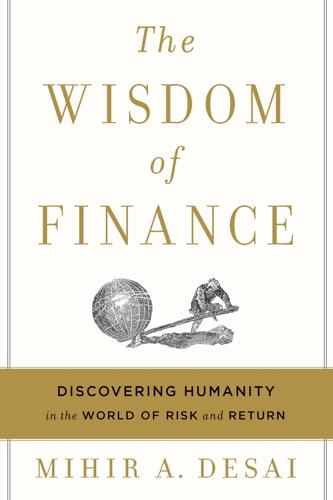
The Wisdom of Finance: Discovering Humanity in the World of Risk and Return
by
Mihir Desai
Published 22 May 2017
New York: Basic Books, 2008; Kaplan, Michael, and Ellen Kaplan. Chances Are—: Adventures in Probability. New York: Viking, 2006; and Stigler, Stephen M. The Seven Pillars of Statistical Wisdom. Cambridge, MA: Harvard University Press, 2016. An excellent discussion of the Monty Hall problem can be found at https://www.khanacademy.org/math/precalculus/prob-comb/dependent-events-precalc/v/monty-hall-problem. On Buffett, see Frazzini, Andrea, David Kabiller, and Lasse H. Pedersen. Buffett’s Alpha. NBER Working Paper no. 19681, December 16, 2013. National Bureau of Economic Research. http://www.nber.org/papers/w19681.pdf; and Ng, Serena, and Erik Holm.
…
This question rapidly led to a discussion of the empirical regularity that in many countries there are slightly more boys born than girls, and this regularity is not fully attributable to the prevalence of abhorrent means of selecting boys over girls in some cultures. Twenty minutes into this discussion, we were talking about sex ratios, selective abortions, and infanticide—and no one had learned anything about probabilities. My second failed attempt was an effort to introduce the “Monty Hall” problem. In this problem, you are the contestant on the game show Let’s Make a Deal who gets to select one of three curtains. One of the curtains conceals a worthy prize while the other two curtains conceal booby prizes. After you select a curtain, the host of the show, Monty Hall, reveals that one of the remaining two curtains concealed a booby prize.
…
Robert Levet,” 68–69 Journal of Law and Economics, 115 Joyce, James, 91–92, 161 Jura, 128 K Kafka, Franz, 47 Kant, Immanuel, 154–55 Keynes, John Maynard, 51 Kirshner, Julius, 103 Klein, Francesca, 101 Koestler, Arthur, 128 Koons, Jeff, xi, 8, 127, 129–31, 137, 140–41 Celebration series, 140 effective use of leverage, 140–41 Play-Doh, 129 Popeye, 141 L Laplace, Pierre-Simon, 20 LeFevre, Gregg, 174 Lehman Brothers insolvency, 147–48 Let’s Make a Deal (TV show), 16 leverage, 8 benefits and drawbacks, 123–26, 135 Bentham and Smith conflict on, 121–22 “bonus” of leverage, 137–38 debt overhang, 132–35 definition, 123–24 leveraged buyout, 127 risk and return, 125–27 static trade-off theory, 126 leverage, personal and artistic, 127–30 commitment device, 131, 137–40 connection to debt overhang, 132–35 degree of leverage, 130–32 effective use, 138–39 failure and rebirth, 149–50 life-cycle hypothesis, 135–36 role of reputation, 139–40 Levin, Jerry, 108–11 Levine, Joseph, 93–94 Little Feat, 99 Luna, Elle, 90–91 M Macfarlane, Alan, 24 Mad Max (film), 54–55 Maltese Falcon, The (Hammett), 11 Mann, Bruce, 143, 145, 147 Mao Zedong, 67 Marcus, Steven, 11 Mars, Kenneth, 93 Mariani, Paul, 33 McNamee, Roger, 108 Melville, Herman, 46–49 Merchant of Venice, The (Shakespeare), 8, 120 (illus.), 122–23 mergers, 8 AOL–Time Warner merger mistakes, 109–12 asymmetric mergers (bolt-on acquisitions), 111 Ford Motor and Firestone Tire partnership, 117–18 General Motors and Fisher Body merger, 113–17 Hewlett Packard and Autonomy acquisition, 109 integration planning, 110 mergers of equals, 111 serial acquirers, 111 synergies, 109–10 Merton, Robert, 40 Miller, Alice, 95 Milton, John, xi, 7, 59, 68–69, 74 “When I Consider How My Light Is Spent,” 70–71 Miracle Worker, The (film, play), 96 Miranda, Lin-Manuel, 75 Molho, Anthony, 103 Monte Dei Paschi di Siena, 100 Monte delle doti, 101–4 “Monty Hall” problem, 16 moral hazard, 28–30 Morris, Robert, 142 career, 143–45 financier of the revolution, 143 relative to J. P. Morgan and John D. Rockefeller, 143 Mostel, Zero, 75 Moyers, Bill, 155, 158 N Newman, John Henry, 2 Newton, Isaac, 40 Nichols, Mike, 97 Nicomachean Ethics (Aristotle), 55 Nietzsche, Friedrich, 6 1984 (Orwell), 127 normal distribution, 19–20, 39 Nussbaum, Martha, 154–56, 158–60 O O Pioneers!
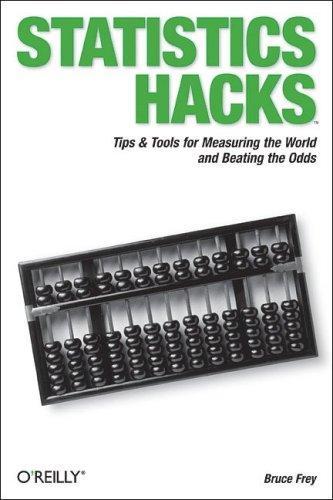
Statistics hacks
by
Bruce Frey
Published 9 May 2006
Suffering from white-line fever? No, you've just applied the statistical solution to what is known as the Monty Hall problem and chosen the road among the three that has the greatest chance of being correct. Hard to believe? Read on, my friend, and prepare to win riches beyond your wildest dreams. The best strategy in this case is so counterintuitive and downright weird that the world's smartest people have disagreed aggressively about whether it even really is the best strategy. But believe meit is. The Monty Hall Problem and Game Show Strategy In our example with the three roads and the prospector, there is, in fact, a two-thirds (about 67 percent) chance that C is the correct road.
…
The 67 percent likelihood now transfers to curtain C. That's why you should always switch to the other curtain. If you were given the option of swapping your pick of one curtain for both the other two curtains, you'd switch in a second wouldn't you? That's essentially what is offered in the Monty Hall problem. Some figures might be necessary to persuade your inner skeptic. Look at Table 5-1, which shows the probability breakdown for the three options at the start of the game. You have a one-third chance of guessing the winning curtain and a two-thirds chance of picking a nonwinning curtain.
…
You might be wrong, of course, but you have a better shot of winning that car or whatever other prize you are playing for if you accept any offers to switch. This is always the best strategy, if a few criteria are met: The host knows what is behind each curtain. The host reveals one of the unchosen curtains and the prize is not behind it. Your original choice was random. The Controversy The Monty Hall problem and the general game show strategy that resulted was first introduced to the masses in 1991 by Marilyn Vos Savant, a columnist for Parade Magazine. Because she is known for being a "high IQ genius," Vos Savant answered questions from readers, sometimes of a brain teaser nature. Someone sent in the problem as I've described it, and she published the answer I have given here.
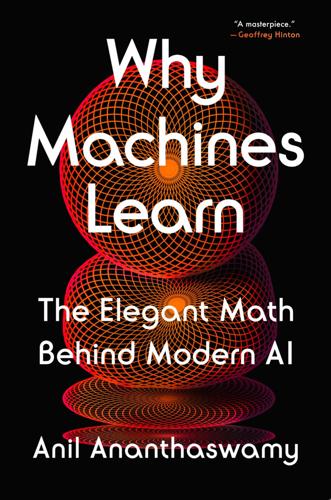
Why Machines Learn: The Elegant Math Behind Modern AI
by
Anil Ananthaswamy
Published 15 Jul 2024
GO TO NOTE REFERENCE IN TEXT Vázsonyi used a computer: “Paul Erdős, Hungarian Mathematician.” GO TO NOTE REFERENCE IN TEXT “Erdős objected”: “Paul Erdős, Hungarian Mathematician.” GO TO NOTE REFERENCE IN TEXT Data scientist Paul van der Laken: “The Monty Hall Problem: Simulating and Visualizing the Monty Hall Problem in Python & R,” paulvanderlaken.com/2020/04/14/simulating-visualizing-monty-hall-problem-python-r/. GO TO NOTE REFERENCE IN TEXT “born in 1701 with probability 0.8”: Stephen M. Stigler, “Richard Price, the First Bayesian,” Statistical Science 33, No. 1 (2018): 117–25. GO TO NOTE REFERENCE IN TEXT Royal Tunbridge Wells in England: “Thomas Bayes: English Theologian and Mathematician,” Science & Tech, Britannica, n.d., www.britannica.com/biography/Thomas-Bayes.
…
That’s a 50 percent chance. Improve the test accuracy to 99.9 percent and keep the background rate at 1 in 100, and we get a posterior probability of 0.91. There’s a very high chance you have the disease if you tested positive. With this whirlwind introduction to Bayes’s theorem, we are ready to tackle the Monty Hall problem. (This is a bit involved. Feel free to skip to the end of this section if you think it’s too much, though it’s quite revealing to see how Bayes’s theorem gets us to Marilyn vos Savant’s answer.) We start by assuming that the car is hidden at random behind one of the three doors. Let’s start by stating our hypothesis and our priors.
…
GO TO NOTE REFERENCE IN TEXT Price submitted another paper: “LII. A Demonstration of the SecondRule in the Essay Towards the Solution of a Problem in the Doctrine of Chances…etc.,” PDF, The Royal Society, royalsocietypublishing.org/doi/10.1098/rstl.1764.0050. GO TO NOTE REFERENCE IN TEXT we are ready to tackle the Monty Hall problem: Steven Tijms, “Monty Hall and the ‘Leibniz Illusion,’ ” Chance, American Statistical Association, 2022, https://chance.amstat.org/2022/11/monty-hall/; and Christopher D. Long, “A Bayes’ Solution to Monty Hall,” The Angry Statistician (blog),” https://angrystatistician.blogspot.com/2012/06/bayes-solution-to-monty-hall.html.

When Einstein Walked With Gödel: Excursions to the Edge of Thought
by
Jim Holt
Published 14 May 2018
In a slightly ludic way, this essay bridges the fields of metaphysics, epistemology, and ethics, lending the volume a unity that I hope is not wholly specious. And lest I be accused of inconsistency, let me (overconfidently?) express the conviction that the “Copernican principle,” “Gödel’s incompleteness theorems,” “Heisenberg’s uncertainty principle,” “Newcomb’s problem,” and “the Monty Hall problem” are all exceptions to Stigler’s law of eponymy (vide p. 292). J.H. New York City, 2017 PART I The Moving Image of Eternity 1 When Einstein Walked with Gödel In 1933, with his great scientific discoveries behind him, Albert Einstein came to America. He spent the last twenty-two years of his life in Princeton, New Jersey, where he had been recruited as the star member of the Institute for Advanced Study.
…
It was winter and Gödel had an electric heater and had his legs wrapped in a blanket. I said, ‘Professor Gödel, what connection do you see between your incompleteness theorem and Heisenberg’s uncertainty principle?’ And Gödel got angry and threw me out of his office.” Overconfidence and the Monty Hall Problem Can you spot a liar? Most people think they are rather good at this, but they are mistaken. In study after study, subjects asked to distinguish between videotaped liars and truth tellers have performed miserably at the task, scoring little better than chance. That goes even for those who were especially sure of their expertise in catching out lies—police detectives, for instance.
…
He was also one of the world’s leading experts on probability theory; indeed, something he invented called the probabilistic method is often simply referred to as the Erdős method—thus making his name synonymous with probability. In 1991, Erdős found himself befuddled when the Parade magazine columnist Marilyn vos Savant published a probability puzzle called the Monty Hall problem, named after the original emcee of the TV game show Let’s Make a Deal. It goes like this. There are three doors onstage, labeled A, B, and C. Behind one of them is a sports car; behind the other two are goats. You get to choose one of the doors and keep whatever is behind it. Let’s suppose you choose door A.

Evil by Design: Interaction Design to Lead Us Into Temptation
by
Chris Nodder
Published 4 Jun 2013
Journal of Personality and Social Psychology 99.5 (2010): 771–784. Higher social classes are more selfish: Jennifer E. Stellar, Vida M. Manzo, Michael W. Kraus, and Dacher Keltner. “Class and compassion: Socioeconomic factors predict responses to suffering.” Emotion 12.3 (2012): 449–459. Learning from casinos Monty Hall Problem: en.wikipedia.org/wiki/Monty_Hall_problem. Lottery sales and gambling income data: North American Association of State and Provincial Lotteries. Lottery Sales and Profits (naspl.org). 60 percent of adults report playing at least once per year: National Gambling Impact Study Commission staff-generated report on lotteries (1999). 72 percent of all gambling: The majority of gambling income comes from casinos (41 percent) and lotteries (31 percent).
…
It stays at 2/3 even after the host opens the right door. By switching, you keep the 2/3 probability with the added benefit of having one of the options eliminated. If that explanation made your brain hurt, welcome to the world that most people inhabit. The previous example is called the Monty Hall problem after the host who popularized it on the Let’s Make a Deal game show, and yes, they really did use goats. It is a great demonstration of the difference between mathematical probability and common sense. And yet strangely, despite the confusion that most people feel when dealing with questions of probability, they feel qualified to play the odds every time they enter a casino or buy a lottery ticket.
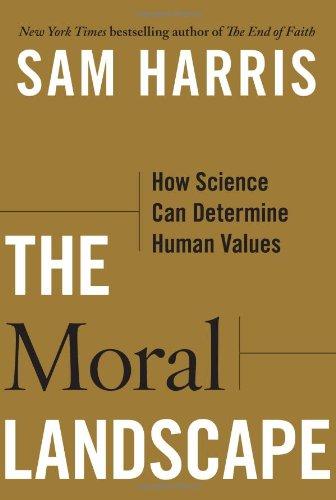
The Moral Landscape: How Science Can Determine Human Values
by
Sam Harris
Published 5 Oct 2010
If you stick with your initial choice, however, your odds of winning are actually 1 in 3. If you switch, your odds increase to 2 in 3.54 It would be fair to say that the Monty Hall problem leaves many of its victims “logically dumbfounded.” Even when people understand conceptually why they should switch doors, they can’t shake their initial intuition that each door represents a 1/2 chance of success. This reliable failure of human reasoning is just that—a failure of reasoning. It does not suggest that there is no correct answer to the Monty Hall problem. And yet scientists like Joshua Greene and Jonathan Haidt seem to think that the very existence of moral controversy nullifies the possibility of moral truth.
…
He notes that when asked to justify their responses to specific moral (and pseudo-moral) dilemmas, people are often “morally dumbfounded.” His experimental subjects would “stutter, laugh, and express surprise at their inability to find supporting reasons, yet they would not change their initial judgments …” The same can be said, however, about our failures to reason effectively. Consider the Monty Hall Problem (based on the television game show Let’s Make a Deal). Imagine that you are a contestant on a game show and presented with three closed doors: behind one sits a new car; the other two conceal goats. Pick the correct door, and the car is yours. The game proceeds this way: Assume that you have chosen Door #1.
…
See also health memes, 20–21 memory, 116, 212n71, 234n54 Mill, John Stuart, 5, 199n10, 207n12 Miller, Geoffrey, 56 Miller, Kenneth, 173, 237n97 Miller, William Ian, 215n93 mind, 83–85, 110, 119, 158–59, 180. See also brain science; brain structures; theory of mind misogyny, 43, 196n9 Moll, Jorge, 91–92, 212n64, 213n78 Monty Hall Problem, 86, 211–12n54 Mooney, Chris, 174–76 Moore, G. E., 10, 12, 196n16 moral brain, 91–95 moral experts, 36, 198n6, 202n17 moral landscape: Bad Life and Good Life in, 15–21, 38–42 facts and values in, 10–14 flawed conceptions of morality and, 53 importance of belief and, 14 meaning of, 7–10 moral progress and, 177–79, 188, 191 problem of religion and, 2, 22–25 suffering and, 21–22 See also morality; values; and headings beginning with moral moral law, 33, 38, 161, 169–70 moral paradox, 67–77 moral persuasion, 49–50 moral philosophy, 81–82, 197–98n1, 199n10, 225n35.
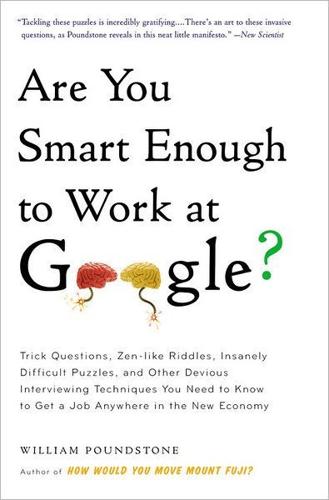
Are You Smart Enough to Work at Google?: Trick Questions, Zen-Like Riddles, Insanely Difficult Puzzles, and Other Devious Interviewing Techniques You ... Know to Get a Job Anywhere in the New Economy
by
William Poundstone
Published 4 Jan 2012
Poundstone, William. How Would You Move Mount Fuji? Microsoft’s Cult of the Puzzle: How the World’s Smartest Companies Select the Most Creative Thinkers. New York: Little, Brown, 2003. Selvin, Steve. “A Problem in Probability.” Letter to the editor. American Statistician 29 (1975): 67. ———. “On the Monty Hall Problem.” Letter to the editor. American Statistician 29 (1975): 134. Stone, Dianna L., and Gwen E. Jones. “Perceived Fairness of Biodata as a Function of the Purpose of the Request for Information and Gender of the Applicant.” Journal of Business and Psychology 11 (1997): 313–23. Thaler, Richard.
…
“have important applications in the cheese and sugarloaf industries”: Quoted in Gardner, The Scientific American Book of Mathematical Puzzles and Diversions, 34. Putzer and Lowen’s 1958 publication was a research memorandum issued by Convair Scientific Research Laboratory, San Diego. Selvin argued that you should switch boxes: Selvin, “A Problem in Probability.” had to defend it in a follow-up letter: Selvin, “On the Monty Hall Problem.” “has been debated in the halls of the Central Intelligence Agency”: Tierney, “Behind Monty Hall’s Doors.” only 12 percent of those questioned: Granberg and Brown, “The Monty Hall Dilemma,” 711. “Certainly Monty Hall knows”: Selvin, “A Problem in Probability.” “I wouldn’t want to pick the other door”: Granberg and Brown, “The Monty Hall Dilemma,” 718.
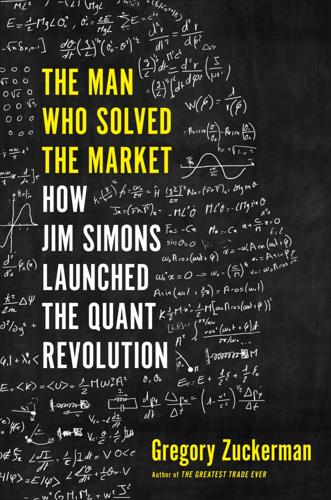
The Man Who Solved the Market: How Jim Simons Launched the Quant Revolution
by
Gregory Zuckerman
Published 5 Nov 2019
The fund’s portfolio was market neutral, impervious to the overall stock market’s ups and downs. D. E. Shaw embraced a different hiring style than Renaissance. In addition to asking specific, technical questions about an applicant’s field of expertise, the firm challenged recruits with brainteasers, situational mathematical challenges, and probability puzzles, including the famed Monty Hall problem, a brain teaser based on the old television show Let’s Make a Deal. Employees, many of whom were fans of the British science-fiction television show Doctor Who, dressed informally, breaking Wall Street’s stiff mold. A 1996 cover story in Fortune magazine declared D. E. Shaw “the most intriguing and mysterious force on Wall Street . . . the ultimate quant shop, a nest of mathematicians, computer scientists, and other devotees of quantitative analysis.”
…
(Kelly formula), 91–92, 96, 127 Kempe, Julia, 272 Kennedy, John F., 31, 78 Kepler Financial Management, 133–34, 157, 166–67 kernel methods, 84–86, 96 Kirtland Air Force Base, 170–71 Klein, Naomi, 321 Koch, Charles, 278 Koch, David, 278 Kochen, Simon, 69–70, 71, 103 Kononenko, Alexey, 236–37, 241–43, 262–63, 270–71 Kostant, Bertram, 18, 20 Kovner, Bruce, 140 Kurz, Christopher, 121–22 Kushner, Jared, 281, 292 Lackman, Abe, 286 Laufer, Henry, xi, 101 background of, 140–41 Long Island Sound estate of, 227–28 at Renaissance, 109, 141–44, 149–50, 201, 229–31, 233 at Stony Brook, 77, 78, 84–85, 141–42 trading models, 77, 107–18, 142–43, 149–50, 156, 168, 189, 197, 229–30, 253, 258 Laufer, Marsha Zlatin, 141–42 Law of Vibration, 123 Lawrence School, 13 Leave.EU, 280–81 L’eggs, 162 Lehman Brothers, 173, 264, 309 Leibler, Dick, 26, 30–31, 32 Leinweber, David, 204 Leo, Leonard, 290 Let’s Make a Deal (TV show), 211 leverage, 188 Lewinsky, Monica, 208 Lieberman, Louis, 46 Limroy, 50–51, 53, 54, 55, 58, 98, 346 linear regression, 83–84 liquidity, 229 Lo, Andrew, 123, 124 locals, 110 Loma Prieta earthquake of 1989, 107 Long-Term Capital Management (LTCM), 209–11, 212–13, 226, 256 Lord Jim, The (yacht), 60 loss aversion, 152 Lott, John R., Jr., 207 Lourie, Robert, 11, 228, 257 Lux, Hal, 218 Lynch, Carolyn, 162 Lynch, Peter, xvi, 3, 161–63 McCain, John, 304 McCarthy, David, 154 McCarthy, Eugene, 74 McGrayne, Sharon, 202 machine learning, 4–5, 47–48, 144, 205, 215, 315 McNulty, Bill, 295 Macrae, Kenny, 267 macro investors, 164 “macroscopic variables,” 29 Madoff, Bernard, 146n, 198 Magellan Fund, 161–63, 333 Magerman, David, xi background of, 182–84 computer hacking of, 191–93, 213 confrontational behavior of, 235, 270 education of, 183–85 at IBM, 177, 181, 185, 191–92 Mercers and, 195, 213–14, 232, 277, 291–99, 318 at Penn, 270 philanthropic activity of, 270, 318 presidential election of 2016 and Trump, 290–94 Magerman, David, at Renaissance Brown and, 181–82, 191–95, 241, 294, 296, 297, 299, 318 computer bug, 194–95, 213 departures, 262–63, 269–70 firing, 317–18 Kononenko and, 237, 241–43, 262–63, 270–71 lawsuit and financial settlement, 318–19 misgivings of, 269–70 recruitment of, 181–82, 186–87 return to, 270–71 Simons and, 181–82, 186–87, 234–35, 237, 296–99 tech bubble, 215–17 trading system, 186–87, 191–95, 213–17, 234–36 Magerman, Debra, 291, 292 Magerman, Melvin, 182–83, 184 Mahlmann, Karsten, 114 Malloy, Martin, 259 management fees, 115n, 248 Man AHL, 313 Mandelbrot, Benoit, 127 Man for All Markets, A (Thorp), 128 Manhattan Fund, 123 market neutral, 166–67, 211, 255 Markov chains, 46–48, 81 Markov model, xx, 29, 174 Markowitz, Harry, 30 Massachusetts Institute of Technology (MIT), 9, 14–16, 17, 20–21, 89–91, 325–26 Mathematical Sciences Research Institute, 236–37 Math for America, 269, 296–99, 321 Matrix, The (movie), 307 Mattone, Vinny, 210–11 Mayer, Jane, 280 Mayer, Jimmy, 15, 16–17, 21, 38–39, 50 Mazur, Barry, 15 Medallion Fund basket options, 225–27 fees, 145–46, 235–36, 271, 315–16 financial crisis and, 257–61, 263–64 GAM Investments, 153–54 launch of, 98 move into stock investing, 157–58 returns, xvi, 140, 145–46, 151, 153, 156, 157, 215, 217–18, 223–24, 225, 247–48, 255, 271, 315–16, 319, 331–32 returns comparison, 333 Sharpe ratio, 218, 223–24, 245 size limit, 246–47 trading models, 107–9, 113, 138–40, 142–43, 156–57, 168, 197–205, 271–74 Media Research Center, 304 Mercer, Diana, 179, 186, 214, 228, 288 Mercer, Heather Sue, 207, 214, 228 Mercer, Jennifer “Jenji,” 179, 186, 228 Mercer, Rebekah, xi, 228 Bannon and Breitbart News, 278–83, 288–90, 294–95, 301–2 emergence as right-wing donor, 277–79, 301–2 Magerman and, 214, 291, 293, 298, 299 political blowback and, 301–2, 303–5 presidential election of 2016 and Trump, xviii, 279–86, 288–90, 294–95 at Renaissance, 214 Mercer, Robert, xi background of, 169–70 education of, 169–70 emergence as right-wing donor, xviii, 276–86, 325–26 at IBM, 4–5, 169, 171–81, 187–88, 202 interest in computers, 170–71 at Kirtland Air Force Base, 170–71 libertarian views of, 171, 207–8, 232, 235, 275–77 presidential election of 2016 and Trump, xviii, 279–87, 291–95, 299–300, 302 Stony Brook Harbor estate (Owl’s Nest), 228, 275, 288–89, 295 Mercer, Robert, at Renaissance client presentations, 251 as co-CEO, xviiin, 231, 290, 301 equity stake, 201 financial crisis and, 257–61 Magerman and, 195, 213–14, 232, 277, 291–99, 318 management, 230–31, 232–33, 237, 241–43, 254–55, 289–90 political blowback and, 291–305 recruitment of, 169, 179–80 resignation of, 301–2, 319 statistical-arbitrage trading system, 4–5, 187–91, 193–95, 197–99, 205–8, 213–14, 221–22, 223, 229–32, 255, 272 tech bubble, 215–17 Mercer, Thomas, 169, 179 Mercer, Virginia, 169 Mercer Family Foundation, 276 Meriwether, John, 209–11, 212 Merrill Lynch, 19–20, 54, 96 Merton, Robert C., 209 Mexico–United States border wall, 290–91 Microsoft, 38, 59 Milken, Michael, 105–6, 129 Millennium Management, 238, 252–54 minimal varieties, 26–28, 38 “Minimal Varieties in Riemannian Manifolds” (Simons), 28 Mirochnikoff, Sylvain, 278 Mississippi, 13–14 Mnuchin, Steve, 282 Monemetrics Ax at, 34, 51–52, 72–73 Baum at, 45, 49–60, 63–65 founding and naming of, 44–45 Hullender at, 54–59, 74 name change to Renaissance, 61. See also Renaissance Technologies Corporation Straus at, 74–77 trading models, 54–60, 62–63 Money Game, The (Goodman), 124–25 Monty Hall problem, 211 More Guns, Less Crime (Lott Jr.), 207 Morgan, Howard, 56 Morgan Stanley, 129–33, 157, 166, 211, 256 Moscow State University, 236 moving averages, 73 Muller, Peter, 256, 299 multidimensional anomalies, 273 Murdoch, Rupert, xvii Murphy, John, 96 Musk, Elon, xvii mutual funds, 161–64, 172, 309–10 My Life as a Quant (Derman), 126 NASA, 93 Nasar, Sylvia, 90 Nasdaq’s dot-com crash, 215–17, 257–58 Nash, John, 89–90 National Museum of Mathematics, 262 National Rifle Association (NRA), 275 National Security Agency (NSA), 23–24, 31, 208 National Youth Science Camp, 170 Nepal, 239, 240 Neuwirth, Lee, 25, 26, 30–31, 46 Newman, Paul, 128 news flashes, 221–22 Newton, Isaac, 27 Newton High School, 13 New York City Fire Department, 168 New York Mercantile Exchange, 58 New York Stock Exchange, 211, 212 New York Times, 31–32, 76, 99, 126, 172, 281, 282, 293 Nick Simons Institute, 240 Nobel Prize, 33, 152, 209 noncompete agreements, 133, 201, 238, 241, 252–53 nondisclosure agreements, xv–xvi, 133, 201, 238, 241, 252–53 nonrandom trading effects, 143–44 Norris, Floyd, 126 Nova Fund, 167, 188–89 number theory, 34, 69–70 Obama, Barack, 276 Ohio State University, 275 Olsen, Greg, 79–80, 96–97 One Up on Wall Street (Lynch), 163 “On the Transitivity of Holonomy Systems” (Simons), 20 Open Marriage (O’Neill), 36 origins of the universe, xviii, 287, 323–26, 350 OSHA (Occupational Safety and Health Administration), 234 Oswald Veblen Prize, 38 Owl’s Nest, 228, 275, 288–89, 295 Pacific Investment Management Company (PIMCO), 163–64, 309 PaineWebber, 155–56 pairs trade, 129–30, 272 Paloma Partners, 138 partial differential equations (PDEs), 21, 26–28 pattern analysis, 5, 24, 45, 57, 123–24 Patterson, Nick background of, 147–48 at IDA, 148 Patterson, Nick, at Renaissance, xv, 145–50, 202 Brown and Mercer, 169, 179–80, 231 departure, 238 LTCM collapse and, 212–13 recruitment of, 168–69 tech bubble, 215–17 trading models, 149–50, 153, 193, 198 Paulson, John, 263–64, 309 PDT Partners, 258, 299 peer pressure, 200 Peled, Abe, 178 Pellegrini, Paolo, 263–64 Penavic, Kresimir, 145, 153 Pence, Mike, 285 Pepsi, 129–30, 272 Perl, 155 “Piggy Basket,” 57–59 Plateau, Joseph, 27 points, 190 poker, 15, 18, 25, 29, 69, 94, 127, 163 polynomials, 93 pool operator, 86 portfolio insurance, 126 portfolio theory, 30, 92 presidential election of 2016, xviii, 279–91, 294–95, 302 presidential election of 2020, 304–5 primal therapy, 36–37 Primerica, 123 Princeton/Newport Partners, 128 Princeton University, 28, 31, 37, 82, 141 Priorities USA, 283 “Probabilistic Models for and Prediction of Stock Market Behavior” (Simons), 28–30 Procter & Gamble, 132 programming language, 155, 191–92, 233–34 p-values, 144 Qatar, 261–62 quantitative trading, 30, 39, 61, 124, 126–27, 211–12, 256, 308–15 quants, xvii, 126–27, 199, 204, 256 Quantum Fund, 164–65, 333 racism, 13–14, 278, 294, 295–96, 303 Rand, Ayn, 277 Reagan, Ronald, 65, 105 Recession of 1969–1970, 123 regression line, 83–84 Reichardt, Louis, 323 Renaissance Institutional Diversified Alpha Fund, 319 Renaissance Institutional Diversified Global Equity Fund, 319 Renaissance Institutional Equities Fund (RIEF), 246–52, 254, 255, 257–61, 264–65, 271, 284, 300, 316, 319 Renaissance Institutional Futures Fund (RIFF), 252, 265, 271 Renaissance Riviera, 227–28 Renaissance Technologies Corporation Ax and Straus establish Axcom, 78–83 Ax joins, 51–52 Ax’s departure, 102–3 Baum joins, 45–46, 49 Baum’s departure, 63–64 Berlekamp’s departure, 117–18 Brown and Mercer join, 169, 179–80 compensation, 200–201, 227, 228–29, 233 expansion into stock investing, 157–58 financial crisis of 2007–2008, 255–62, 263–64 GAM Investments, 153–54 headquarters, 186, 205 hiring and interview process, 202–3, 233 Laufer joins, 109, 141–44 Mercer and political blowback, 291–305 Mercer steps down as co-CEO, 301–2, 319 name change to, 61 nondisclosure agreements, xv–xvi, 133, 201, 238, 241, 252–53 Straus’s departure, 158 tax avoidance investigation of 2014, 226–27 “the Sheiks,” 156–57 timeline of key events, xii trading models, 138–40, 156–57, 161, 203–5, 212–13, 221–22, 272–74 Volfbeyn and Belopolsky, 238, 241, 242, 252–54 Reserve Primary Fund, 172–73 Resnik, Phil, 176 retracements, 203–4 reversion trading strategy, 95–96 Revolution Books, 133–34 Riemann hypothesis, 65 Rival, Anita, 140 Robertson, Julian, 217 Robert Wood Johnson Foundation, 249–50 Robinson, Arthur, 231, 276 Rockefeller, Nelson, 33, 71 rocket scientists, 126 Romney, Mitt, 279, 290 Rosenberg, Barr, 127 Rosenfeld, Eric, 209 Rosenshein, Joe, 16–17, 41 Rosinsky, Jacqueline, 168 Royal Bank of Bermuda, 51 Rubio, Marco, 279 Russian cryptography, 23–26, 46–49, 148 Russian financial crisis of 1998, 210 St.
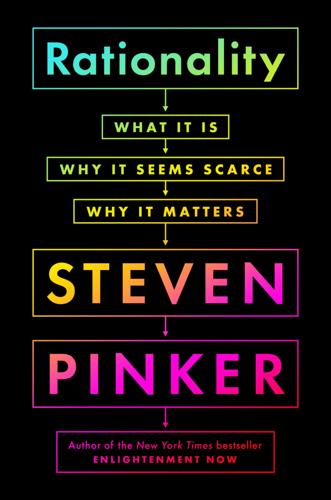
Rationality: What It Is, Why It Seems Scarce, Why It Matters
by
Steven Pinker
Published 14 Oct 2021
But this is not how the problem works. Imagine that after you place your bet on #1, God announces, “It’s not going to be horse #3.” He could have warned against horse #2 but didn’t. Switching your bet doesn’t sound so crazy.42 In Let’s Make a Deal, Monty Hall is God. The godlike host reminds us how exotic the Monty Hall problem is. It requires an omniscient being who defies the usual goal of a conversation—to share what the hearer needs to know (in this case, which door hides the car)—and instead pursues the goal of enhancing suspense among third parties.43 And unlike the world, whose clues are indifferent to our sleuthing, Monty Almighty knows the truth and knows our choice and picks his revelation accordingly.
…
My Erdös number is 3, thanks to Michel, Shen, Aiden, Veres, Gray, The Google Books Team, Pickett, Hoiberg, Clancy, Norvig, Orwant, Pinker, Nowak, & Lieberman-Aiden 2011. The computer scientist Peter Norvig has coauthored a report with fellow computer scientist (and Erdös coauthor) Maria Klawe. 38. To be fair, normative analyses of the Monty Hall dilemma have inspired voluminous commentary and disagreement; see https://en.wikipedia.org/wiki/Monty_Hall_problem. 39. Try it: Math Warehouse, “Monty Hall Simulation Online,” https://www.mathwarehouse.com/monty-hall-simulation-online/. 40. Such as Late Night with David Letterman: https://www.youtube.com/watch?v=EsGc3jC9yas. 41. Vazsonyi 1999. 42. Suggested by Granberg & Brown 1995. 43.
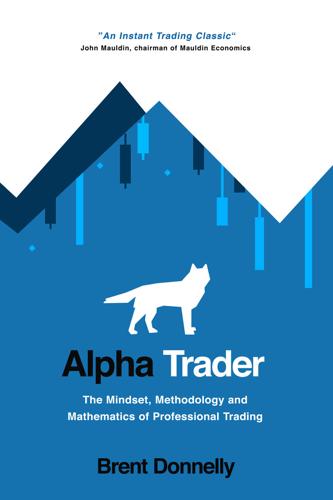
Alpha Trader
by
Brent Donnelly
Published 11 May 2021
In fact, before I knew about Arcsine Law, I made a mistake that I now see others making from time to time. This one is crazy complicated, so if you don’t understand the reasoning, just at least make sure you remember the conclusion. Arcsine Law is about as annoying and difficult to understand as the Monty Hall problem. But worth the effort to understand. First, let me reprint some faulty analysis I did in 2017. If you know why it’s wrong before you read the whole thing, you are either a genius or you already know about Arcsine Law. The following is an excerpt from a daily wrote toward the end of 2017. Have you ever noticed that the yearly highs and lows in G7 FX tend to happen more at the start and end of the year (and less in the middle)?
…
Dalton), 294 mindfulness, 55, 106, 135, 158, 383 Mitchell, Cory, 40 MMIDs, 474 momentum building, 300, 301 dojis and waning, 334 price, 299 stocks, 23 strategy, 324 technical indicators and, 325 tracking in correlated markets, 398 traders, 224 money, reasons for losing, 156—173 bad discipline, 156, 157—158 emotion, 156, 168—173 failure to adapt, 173 lack of focus on risk management, 156, 167—168 not enough edge, 156, 159—165 overreliance on simple indicators, 156, 165, 166—167 See also gambling; overtrading; sensation- seeking traders; stimulation, trading for Moneyball (M. Lewis), 451, 460 month-end dollar effect, idea generation and, 405 Monty Hall problem, 251 morning quick techs, 341—343 sheet, 341—342 motivation to succeed, 128—129 moving averages, 338—341 deviation from, 338, 340, 340—341 flat position and, 338 as trend indicator, 337—338 Muehlfeld, Katrin, 70 Munger, Charlie, 297 Murphy, John J., 331 narrative, 297—298, 308 See also narrative analysis; narrative cycle narrative analysis, 298, 347 See also narrative cycle narrative cycle becoming expert on, 306—309 confirmation bias and, 299 filtering trade ideas and, 407—408 idea generation and understanding, 392, 393—395, 407 importance of understanding, 298—299, 304 stylized view of typical, 299 See also narrative cycle, stages of narrative cycle, stages of, 300—303 end (stage 7), 303 final hype wave (stage 5), 302 first cracks (stage 4), 302 momentum builds (stage 2), 300—301 peak and turn (stage 6), 302—303 primary trend (stage 3), 301 under the radar (stage 1), 300 NASDAQ, 284, 471, 472, 476 bubble (2000—2002), 155—156, 174, 405 bullish, 222 inefficient 1998 to 2002, 477 Level 2 screen, 474 1999, 185 price collapse of every stock, 476 roaring back, 477 negative interest rates, 208 negativity, 103, 243, 437 as attention magnet, 245 in social media comments, 98 versus positivity, 244 Nestor, James, 135, 491 Netflix (NFLX) stock, 215, 216, 319 networking, 35, 89 neuroticism, 47, 49, 50, 51, 52, 58, 71 negative outcomes, 55 ways to combat, 55 NewsPivot, 305, 368, 408, 431 HYG gaps higher on news, then successfully tests and holds, 326 as significant reference point, 325—327, 330 Nikkei bubble (1989—2008), 405 9/11, 441, 471 Nison, Steve, 331 Nordvig, Jens, 492 numeracy, 34, 64, 69, 70, 78, 248 See also math facts, counterintuitive Oanda positioning data, 345 objectivity, trader, 86, 235—236 OCEAN.
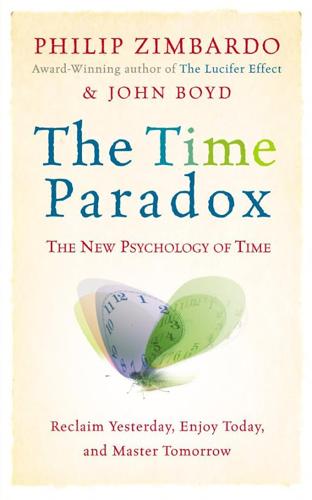
Time Paradox
by
Philip G. Zimbardo
and
John Boyd
Published 1 Jan 2008
Tversky, “Variants of Uncertainty,” Cognition 11: 143–57 (1982). 19. D. Kahneman and A. Tversky, “The Psychology of Preferences,” Scientific American 246: 160–73 (1982). 20. Gilovich and Medvec, “The Experience of Regret.” 21. T. Gilovich, V. H. Medvec, and S. Chen, “Omission, Commission, and Dissonance Reduction: Overcoming Regret in the Monty Hall Problem,” Personality and Social Psychology Bulletin 21: 182–90 (1995). 22. H. B. Gerard and G. C. Mathewson, “The Effects of Severity of Initiation on Liking for a Group: A Replication,” Journal of Experimental Social Psychology 2: 278–87 (1966). 23. P. G. Zimbardo, “Control of Pain Motivation by Cognitive Dissonance,” Science 151: 217–19 (1966). 24.
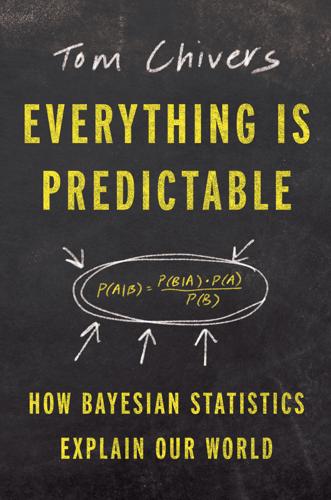
Everything Is Predictable: How Bayesian Statistics Explain Our World
by
Tom Chivers
Published 6 May 2024
Or imagine if the mathematician came up to you and said, unprompted, that they have two children and one of them is a boy. You would probably not think, “And it’s completely unknowable to me what the other one is!” I at least would assume that the other is a girl (why not say, “They’re both boys?”). The math of this is entirely the same as the Monty Hall problem above. But for some reason I find it far more counterintuitive, and I wanted to share the frustration with you all. And I’m not alone, I think. People struggle with this sort of thing: explicit probability-reasoning, actually dealing in numbers and percentages rather than instinctive catching-the-ball-style heuristics.
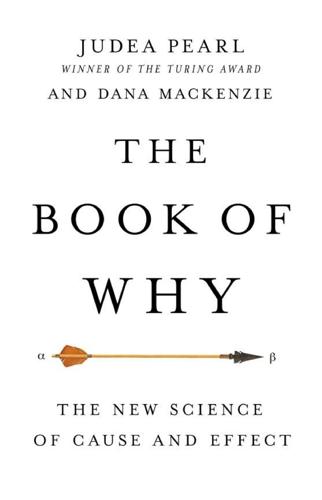
The Book of Why: The New Science of Cause and Effect
by
Judea Pearl
and
Dana Mackenzie
Published 1 Mar 2018
Causal paradoxes shine a spotlight onto patterns of intuitive causal reasoning that clash with the logic of probability and statistics. To the extent that statisticians have struggled with them—and we’ll see that they whiffed rather badly—it’s a warning sign that something might be amiss with viewing the world without a causal lens. THE PERPLEXING MONTY HALL PROBLEM In the late 1980s, a writer named Marilyn vos Savant started a regular column in Parade magazine, a weekly supplement to the Sunday newspaper in many US cities. Her column, “Ask Marilyn,” continues to this day and features her answers to various puzzles, brainteasers, and scientific questions submitted by readers.

Rationality: From AI to Zombies
by
Eliezer Yudkowsky
Published 11 Mar 2015
In this case, you know that all 7 other flips came up tails, and the posterior odds are 1:16 against the coin being H-biased. I could have decided in advance to say the result of the 4th, 6th, and 9th flips only if the probability of the coin being H-biased exceeds 98%. And so on. Or consider the Monty Hall problem: On a game show, you are given the choice of three doors leading to three rooms. You know that in one room is $100,000, and the other two are empty. The host asks you to pick a door, and you pick door #1. Then the host opens door #2, revealing an empty room. Do you want to switch to door #3, or stick with door #1?
…
If the host always opens door #2 regardless of what is behind it, #1 and #3 both have 50% probabilities of containing the money. If the host only opens a door, at all, if you initially pick the door with the money, then you should definitely stick with #1. You shouldn’t just condition on #2 being empty, but this fact plus the fact of the host choosing to open door #2. Many people are confused by the standard Monty Hall problem because they update only on #2 being empty, in which case #1 and #3 have equal probabilities of containing the money. This is why Bayesians are commanded to condition on all of their knowledge, on pain of paradox. When someone says, “The 4th coinflip came up heads,” we are not conditioning on the 4th coinflip having come up heads—we are not taking the subset of all possible worlds where the 4th coinflip came up heads—rather we are conditioning on the subset of all possible worlds where a speaker following some particular algorithm said “The 4th coinflip came up heads.”